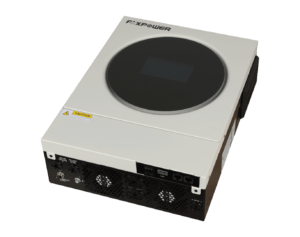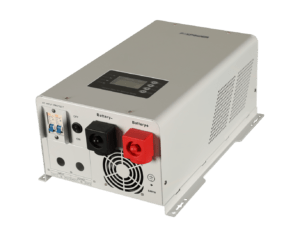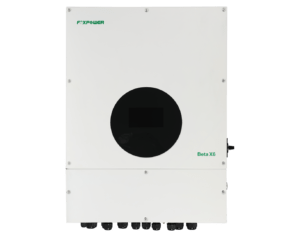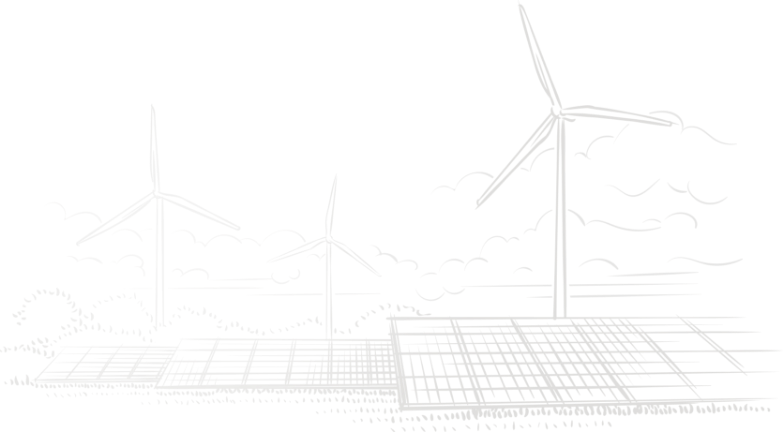The rapid growth in global demand for renewable energy has positioned solar power as one of the most promising solutions. Central to the effective utilization of solar energy is the inverter, a crucial component that converts direct current (DC) generated by solar panels into usable alternating current (AC). The advancements in inverter technology have been pivotal in enhancing system efficiency, stability, and reliability.
Understanding the Basics of Inverters
Inverters perform the essential task of converting DC electricity from solar panels into AC electricity, which can be used by household appliances or fed into the power grid. This conversion process involves several key steps:
1.DC Input: Solar panels convert sunlight into DC electricity, which is transmitted to the inverter.
2.Power Conversion: Inside the inverter, power electronic components such as Insulated Gate Bipolar Transistors (IGBTs) or Metal-Oxide-Semiconductor Field-Effect Transistors (MOSFETs) switch the direction of the DC current rapidly to create an AC waveform.
3.Filtering and Regulation: The generated AC electricity passes through filters to eliminate high-frequency harmonics and through control circuits to adjust the voltage and frequency, ensuring the output meets the grid or appliance requirements.
4.AC Output: The inverter outputs stable AC electricity, ready for use in homes or for feeding into the electrical grid.
Revolutionary Advancements in Inverter Technology
1.Increased Conversion Efficiency:
One of the most significant advancements in inverter technology is the improvement in conversion efficiency. Traditional inverters had conversion efficiencies around 90%, meaning 10% of the generated energy was lost during the conversion process. Modern inverters, leveraging advanced power electronics and optimized designs, now achieve efficiencies exceeding 98%, significantly reducing energy losses and enhancing overall system output.
2.Intelligence and Digitalization:
The integration of the Internet of Things (IoT) and big data technologies has made modern inverters smarter and more digitalized. They now feature real-time monitoring and remote control capabilities, allowing users to check system performance through smart devices at any time. Additionally, inverters are equipped with self-diagnostic and fault prediction functions, which help in early detection and resolution of issues, thus improving system reliability and maintenance efficiency.
3.Advanced Maximum Power Point Tracking (MPPT) Technology:
MPPT technology is crucial for optimizing the efficiency of photovoltaic (PV) systems. Solar panel output varies with light intensity and temperature, and MPPT technology dynamically tracks the maximum power point, adjusting the input voltage and current to ensure the system operates at peak efficiency. Enhanced MPPT algorithms enable systems to maintain high efficiency even under partial shading or uneven lighting conditions.
4.Multi-Functional Integration:
Modern inverters go beyond simple power conversion by integrating multiple functions such as energy storage management and reactive power control. Some inverters support connections with electric vehicle charging stations and other devices, creating a comprehensive energy management platform. This integration adds significant value and enhances the user experience.
The Importance of Inverters in Future Solar Power Generation
1.Higher Conversion Efficiency and Power Density:
Future inverters will continue to evolve towards higher conversion efficiencies and power densities. The adoption of new materials and technologies will reduce the size and weight of inverters, lowering installation and maintenance costs and increasing economic benefits for users.
2.Integration with Smart Grids and Microgrids:
As energy systems become more intelligent and diverse, inverters will play a crucial role in smart grids and microgrids, enabling more flexible and efficient energy management. Inverters will automatically adjust their output based on grid demands, participating in peak shaving and frequency regulation, thus enhancing the stability and reliability of the overall power system.
3.Diverse Application Scenarios:
Inverters will become increasingly important in distributed energy systems, smart cities, and smart homes. They will support the collaborative use and optimized management of various energy forms, driving the diversification and intelligent development of energy systems and providing users with more efficient and reliable energy solutions.
4.Sustainable Development and Environmental Protection:
Future inverter designs will emphasize environmental sustainability. By using more eco-friendly materials and manufacturing processes, the environmental impact of inverter production will be minimized. Additionally, the high efficiency and long lifespan of inverters will help reduce electronic waste, promoting the green development of the PV industry.
Conclusion
The revolutionary advancements in inverter technology have not only enhanced the efficiency and reliability of PV systems but have also laid a solid foundation for the intelligent and diversified development of future energy systems. With continuous innovation and expansion of application scenarios, inverters will play an increasingly vital role in solar power generation. By consistently advancing technology and expanding application possibilities, inverters will support the broader adoption of solar energy, driving the transition and upgrading of the global energy structure and contributing significantly to achieving carbon neutrality and protecting the environment.








